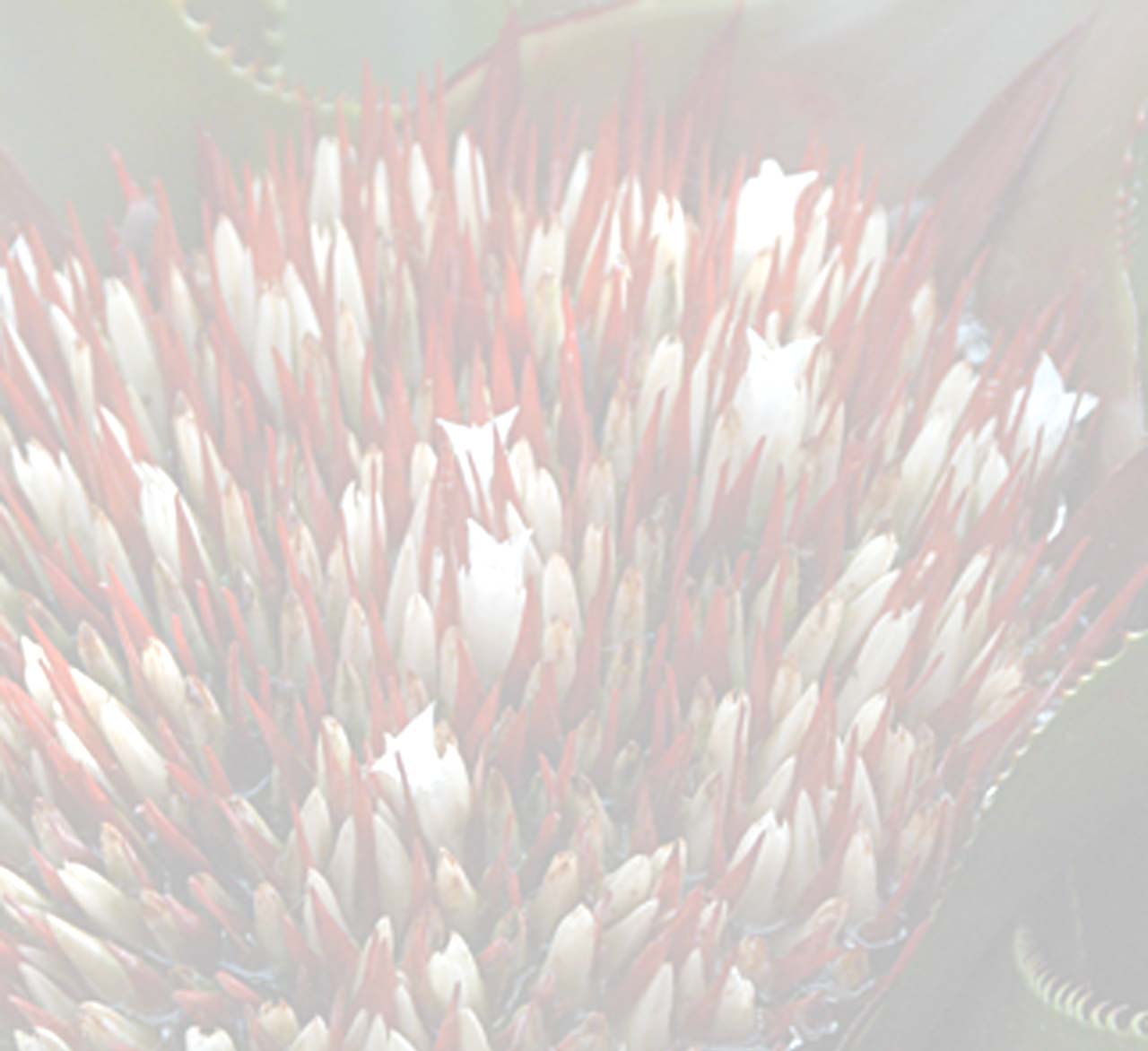


plant flowering ca 25 cm high, not at all stoloniferous leaves ca 20, spreading out at anthesis, rosulate, sub-coriaceous, forming a wide funnel shape at the base. leaves: sheath wide elliptic or wide obovate, ca 13 cm long, ca 10 cm wide, both sides dense brown lepidote and also both sides more or less greenish but often purplish-red towards the top and brownish towards the base; blade long sublingulate, 35–60 cm long, 6 cm wide at its maximum, distinct narrowing towards the base, channelled, both sides inconspicuous but sub-dense or dense white lepidote, purplish red or frequently becoming greenish above, tip acute and clearly cuspidate, edges with sub-dense spines, spines 1 – 1.5 mm long. inflorescence: peduncle 5–7 cm long, ca 10 mm wide when living, dense brown wool, hidden by the leaf sheaths; peduncle bracts the lowest ones leaflike or nearly so, upper ones similar to primary bracts; fertile part compound, sub-corymbose, densely flowered, ca 6 cm long, 5–7 cm diam., hidden between the leaves but emerging a little above the leaf sheaths; primary bracts ovate towards sub-orbicular, 4–7 cm long, 3–6 cm wide, inside greenish, sub-lanate towards becoming glabrous, outside greenish or brownish and almost dense brown woolly, edges smooth or spiny near tip, tip acute and clearly cuspidate, cusps sharp and strongly nerved near the base when dry, more or less adnate to the base of the peduncle of the branch, suberect, barely shorter than the branch or barely exceeding, outside ones clearly concave but not keeled, inside ones keeled; branches 8–10, 5–7 cm long, pedunculate; peduncle much flattened, 10–15 mm long, 7–10 mm wide, dense brown lanate and nerved; 15–35 mm wide, densely flowered, 2–3 of the external branches in fascicles, sub flabellate-pulvinate; floral bracts obovate, ca 30 mm long, 15–20 mm wide, tip broadly acute and conspicuously mucronate, mucron sharp, ca7 mm long, margins entire, or remotely toothed near the tip, nerved, inside becoming glabrous, outside dense brown wool towards the tip, carinate, barely shorter than the sepal. flowers sessile, ca 40 mm long; sepals suboblong, asymmetric, tip sub-obtuse and conspicuously mucronate, mucron erect, ca 5 mm long, ca 20 mm long, 8 mm wide at maximum width, greenish, inside brownish lepidote, scale long fimbriate, outside glabrous, free, adaxial pair carinate towards the base and the keel running down into the ovary; petals linear, tip acuminate, suberect, 28 mm long, 5 mm wide, white towards the base, pink towards the tip, forming a 5 mm long tube at the base, at the base 2 ligules, 8 mm long, entire at the tip but irregular toothed, clearly 2 longitudinal callouses. stamens included, filaments complanate, joined to the petal high up the tube, sepals adnate to the petals for 8mm, anthers linear, 5–7 mm long, obtuse at base, tip clearly mucronulate, dorsifixed near the middle, ovary clavate, trigonous, very lightly complanate, ca 12 mm long, ca 10 mm diam., white, glabrous, epigynous tube ca 5 mm long; placental loculi fixed at tip; ovules many, apiculate or short caudate.Edited from : Bradea. .